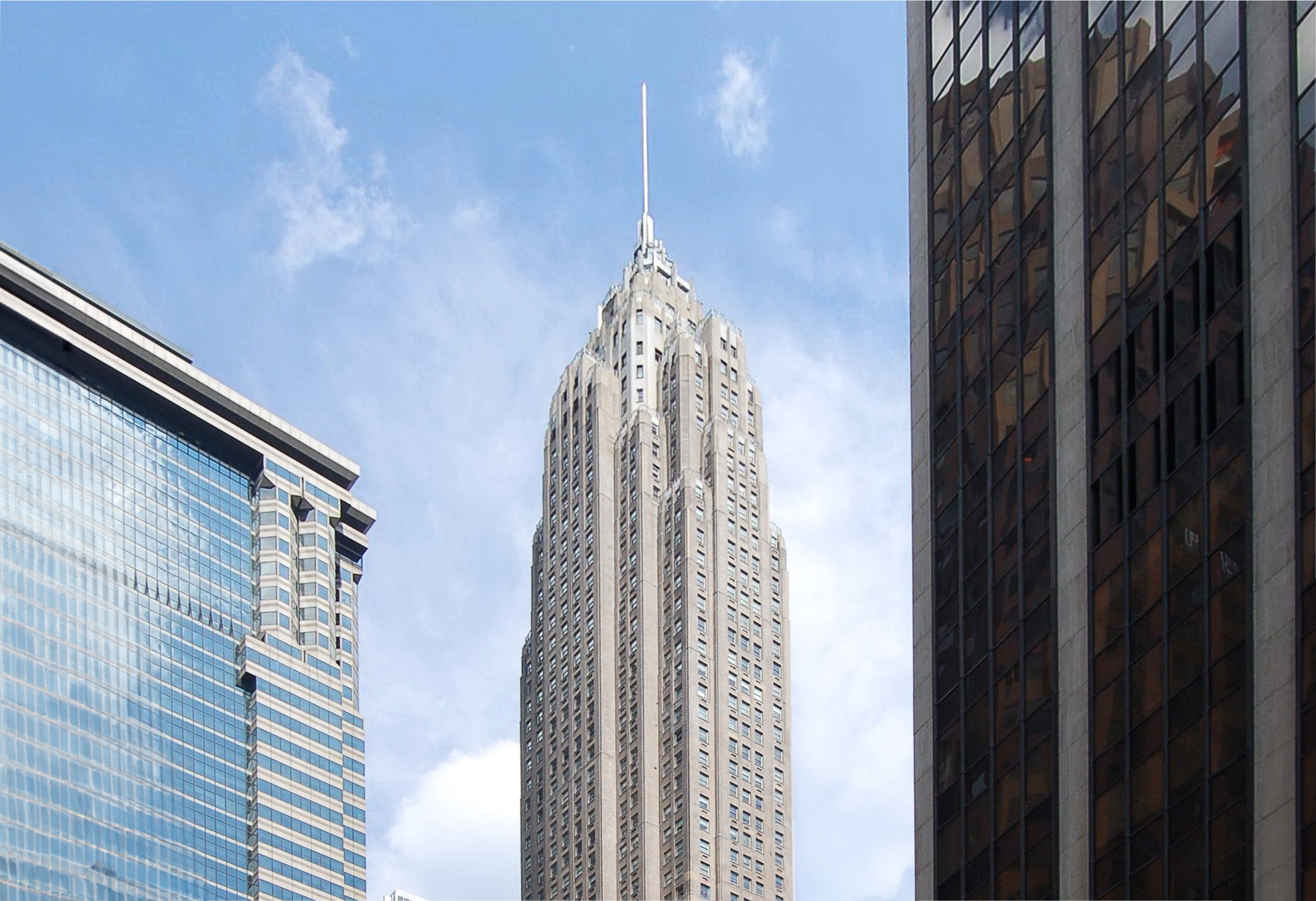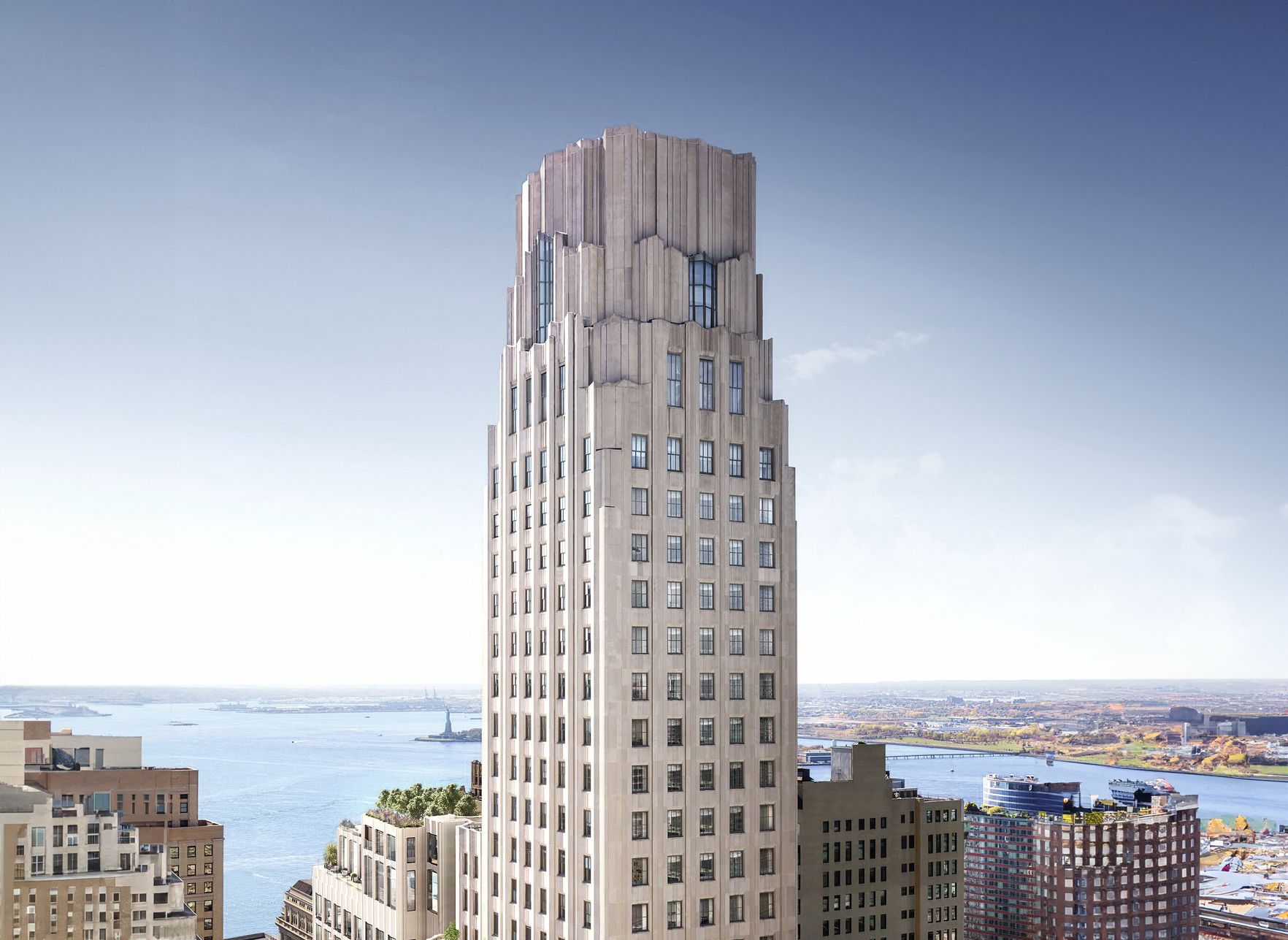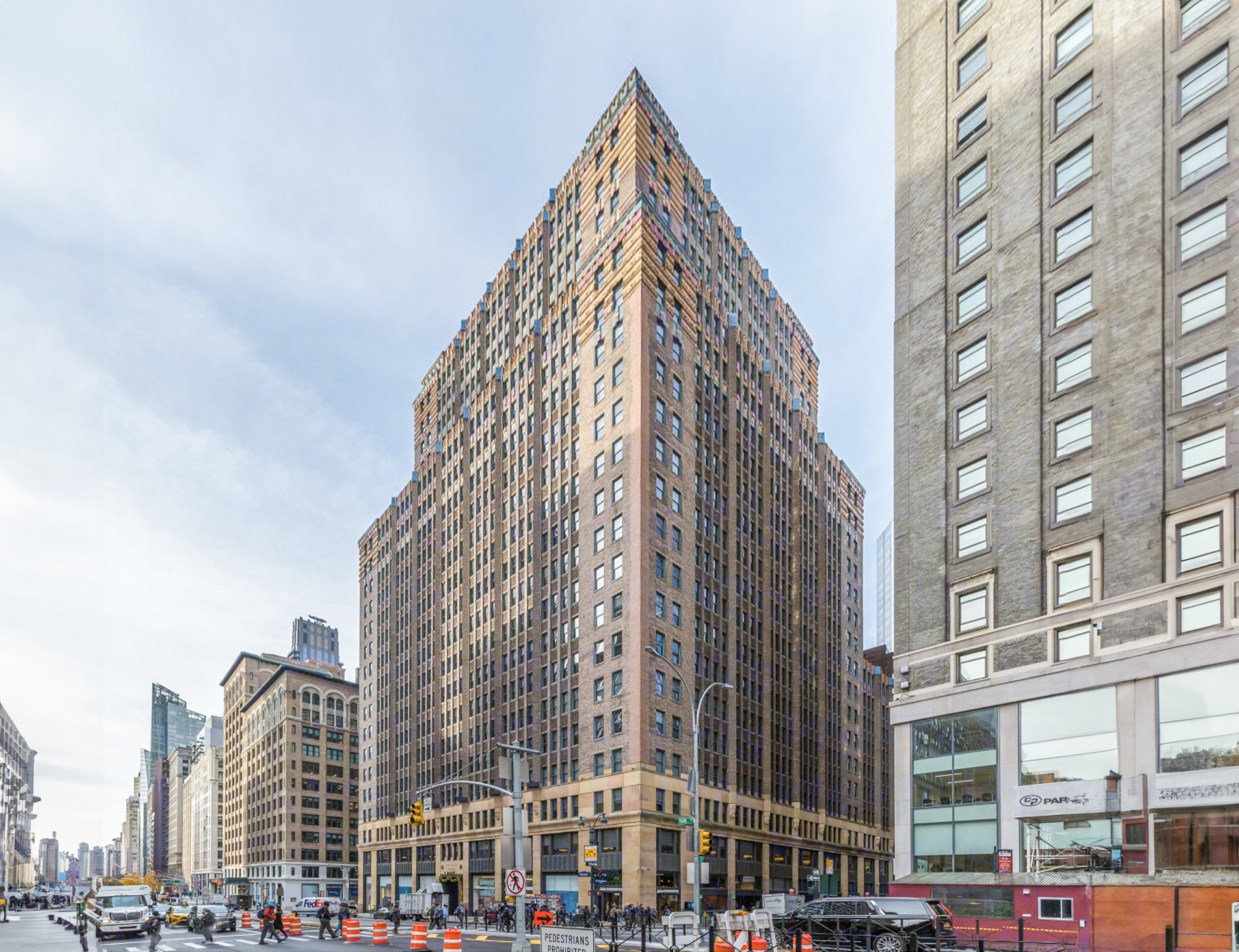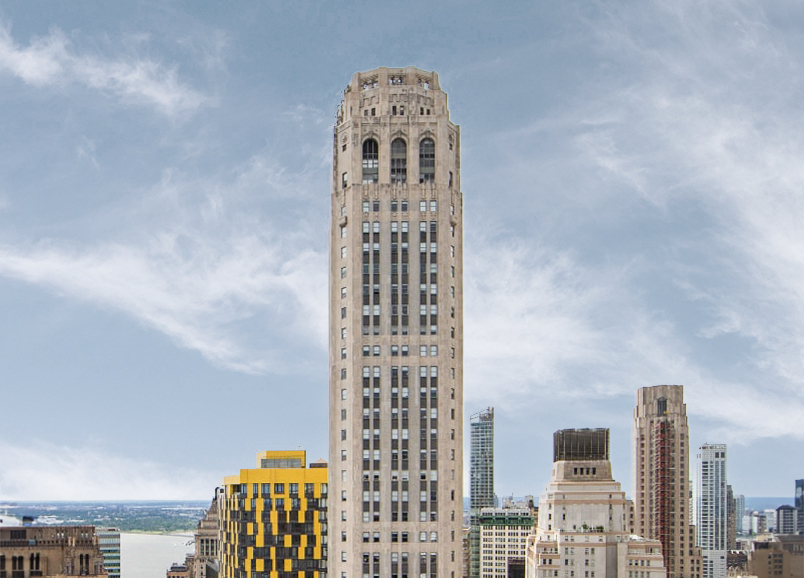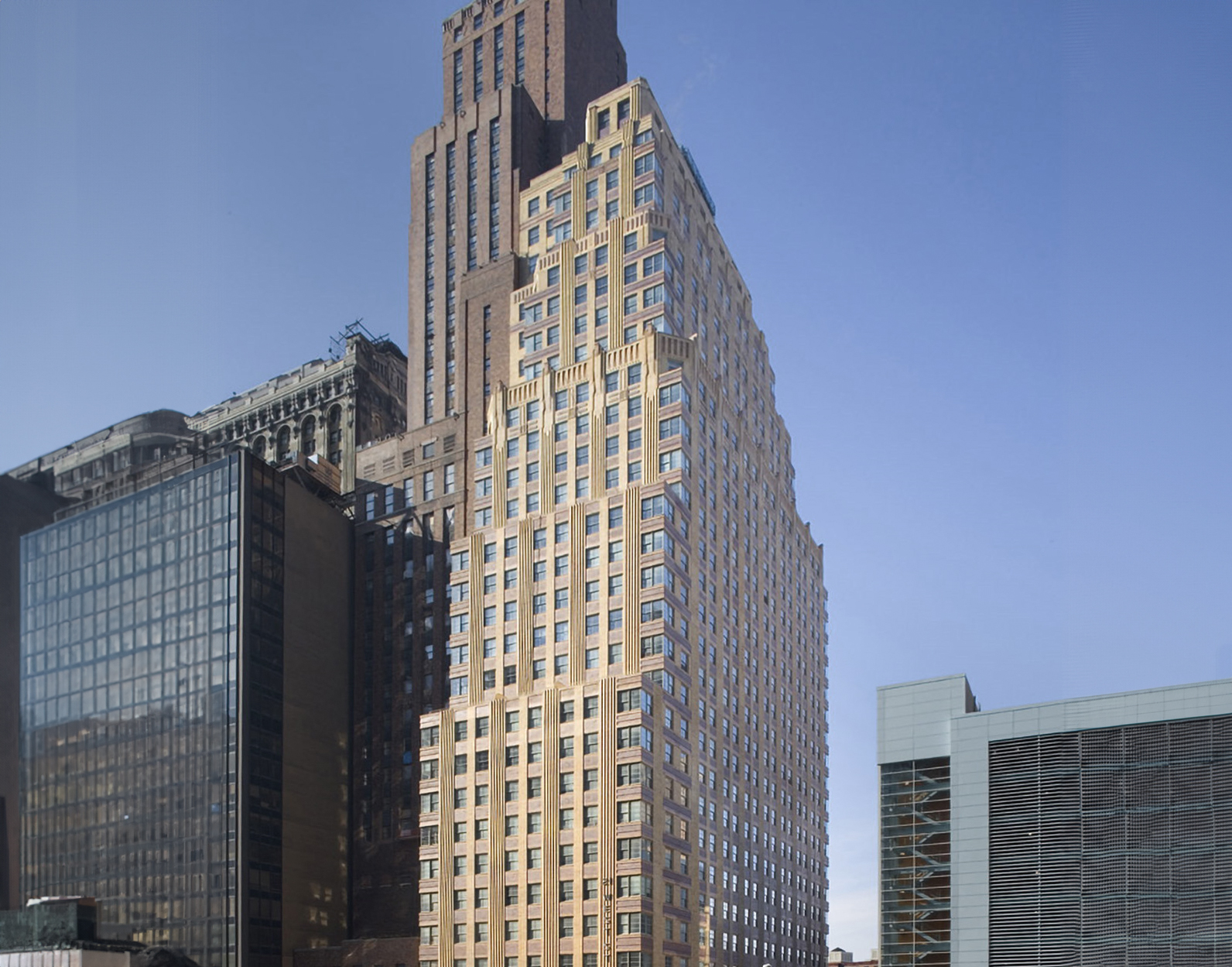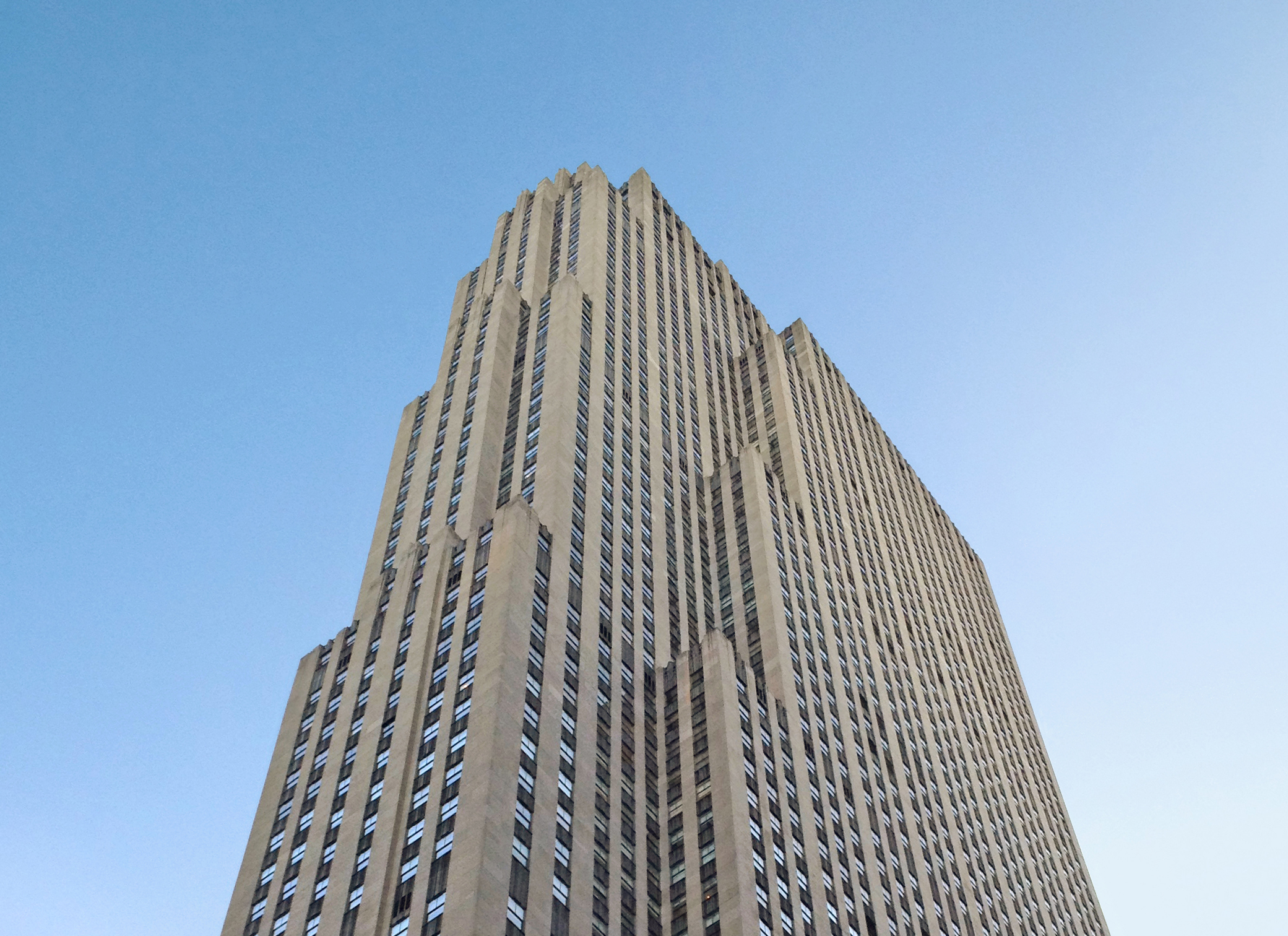The 70 Pine Street Building is an Art-deco skyscraper designed by Clinton & Russell, Holton & George, and built between 1930 and 1932, for a reported $7.00 million dollars, in New York, NY.
70 Pine Street Building is not the only name you might know this building by though. It is common for companies to want to attach their names to iconic buildings when they move in, or for the general public to come up with nicknames, and this one is no exception. The building has changed names several times over the years, and is also known as:
- 60 Wall Tower.
- Cities Service Building until 1965.
- American International Building from 1976 until this day.
Its precise street address is 70 Pine Street, New York, NY. You can also find it on the map here.
The 70 Pine Street Building is a structure of significant importance both for the city of New York and the United States as a nation. The building embodies the distinctive characteristic features of the time in which it was built and the Art Deco style. Because of that, the 70 Pine Street Building was officially included in the New York Register of Historic Places on June 21st 2011.
At the time of its completion in 1932 the 70 Pine Street Building incorporated solutions that were quite advanced at the time, these included the use of escalators, which were rare in large office buildings back then. The building also included a ventilation system which was incorporated inside the walls and over the radiators.
